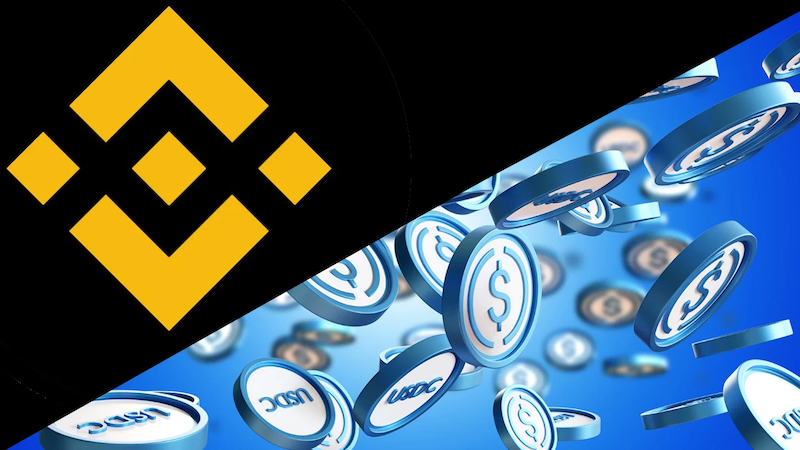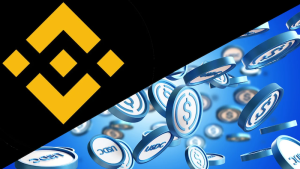Join Our Telegram channel to stay up to date on breaking news coverage
Following the collapse of Silvergate Bank, Binance’s proof-of-reserves (PoR) report is now under examination due to the notable reduction in its USDC reserves. The report was unveiled on August 1 to demonstrate the exchange’s transparency in handling user assets, but it has sparked disputes across various social media platforms. A witty remark by Brian Armstrong during the company’s latest earning call has added fuel to the debate.
The PoR revealed that between March 1 and April 1, 2023, the exchange’s USDC balance dropped sharply from $3.4 billion to $23.9 million. This comes after Binance began implementing a swap from USDC to Binance USD (BUSD) in September 2022. Although USDC issuance decreased, Binance maintained a substantial amount of the stablecoin at the time.
The available on-chain information indicates that after Silvergate Bank’s collapse and the following de-pegging of the stablecoin, the exchange started to convert its USDC reserves into Ethereum (ETH) and Bitcoin (BTC). Aleksandar Djakovic provided details on Twitter, revealing that from March 12 to May 1, Binance acquired around 100,000 BTC and 550,000 ETH, roughly equivalent to $3.5 billion, which matches the depleted USDC reserve value.
Even though the USDC sale sparked controversy, a significant revelation from the report was the exchange’s overall stability. Binance’s financial condition appears to be secure, with the net balance covering all user assets. The net balance ratios for key assets such as BTC, ETH, and USDT exceed customer-held assets, with percentages of 105.61%, 102.71%, and 117.99% respectively.
1/ Binance proof of reserves, the table shows how CZ was withdrawing dollars from US banks after the collapse of Silvergate and Signature banks, at the same time preventing the crypto from collapsing… pic.twitter.com/zGKNkve6y6
— Aleksandar Djakovic (@sasadjak72) August 7, 2023
Industry Responses and Implications
Proof-of-reserves has been gaining popularity as a tool to disclose an exchange’s financial standing, especially after the failure of FTX in November 2022.
Coinbase’s CEO, Brian Armstrong, contributed to the discourse surrounding Binance’s USDC transactions. In the company’s Q2 meeting calls, he remarked that Binance has been offloading its USDC reserves for a less popular stablecoin. Despite this, USDC’s market capitalization has remained stable, which adds complexity to the situation. He further commented on how Binance shifted some of their funds into another stablecoin, yet the USDC market cap appears to be on the rise.
USDC, although still the second-largest stablecoin, has seen its market cap decline, falling from $44 billion in January to $26 billion in the current month. There are circulating reports that Binance has turned to a new Hong Kong-issued stablecoin, FDUSD, especially after the exchange introduced multiple trading pairs and zero trading fees.
USDC’s position as the favored stablecoin for Coinbase, a member of Circle’s owning organization, adds another layer to this complex scenario. The consequences of Binance’s actions on USDC and the stablecoin market are yet to be fully understood, but the situation has undeniably caught the attention of many in the cryptocurrency community.
Binance’s Legal Challenges and Investment Activities
Amid mounting regulatory pressures and potential legal entanglements, Binance continues to be an active player in the investment landscape through its venture capital wing, Binance Labs.
Recent Investments Despite Regulatory Concerns
Last week, Binance Labs revealed four new investments via its Most Valuable Builder (MVB) incubator program. These investment decisions are being made despite the magnified scrutiny that Binance, the parent company, is currently undergoing.
The spotlight on Binance has intensified due to interest from law enforcement both within the United States and internationally. In June, the SEC brought a lawsuit against Binance and its CEO, unveiling 13 specific charges, including running an unregistered exchange and a “blatant disregard of federal securities laws.” The charges encompass Binance’s offerings of unregistered securities such as its BNB token and BUSD stablecoin to the public.
Furthermore, Binance faces accusations from the SEC of neglecting to register as a broker and failing to register as an exchange. Additional legal issues are coming from other countries. For example, French authorities visited Binance’s France office last month, examining allegations of illegal digital-asset service provision and severe money laundering. In Nigeria, the country’s Securities and Exchange Commission (SEC) commanded the exchange to halt its operations.
SEC Regulatory Crackdown: A Wider Trend in the Crypto Space
It is essential to recognize that Binance is not the sole crypto firm encountering legal challenges from U.S. regulators. The SEC has pursued legal action against Coinbase, the most prominent U.S.-based cryptocurrency exchange, and other crypto platforms including Kraken, Bittrex, and the crypto lending service Nexo, within this year.
The ongoing legal battles and regulatory oversight faced by Binance and other crypto firms reflect a shifting landscape in the crypto industry, highlighting the urgent need for compliance with existing laws and regulations. Despite these challenges, Binance’s continuous investment activities demonstrate a resilient approach to the uncertainties of the current regulatory climate.
Related News
- Bitcoin Drops on Report US Prosecutors Are Considering Fraud Charges Against Binance
- Legislative Updates in the U.S. Crypto Realm
- Binance Denies WSJ Report That It Does $90 Billion a Month in Illegal Trades in China
- 15 Best DeFi Coins to Buy in 2023 – Decentralized Finance Tokens
Best Wallet - Diversify Your Crypto Portfolio
- Easy to Use, Feature-Driven Crypto Wallet
- Get Early Access to Upcoming Token ICOs
- Multi-Chain, Multi-Wallet, Non-Custodial
- Now On App Store, Google Play
- Stake To Earn Native Token $BEST
- 250,000+ Monthly Active Users
Join Our Telegram channel to stay up to date on breaking news coverage


